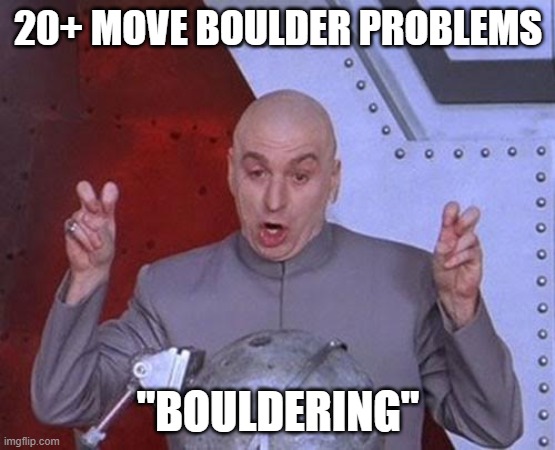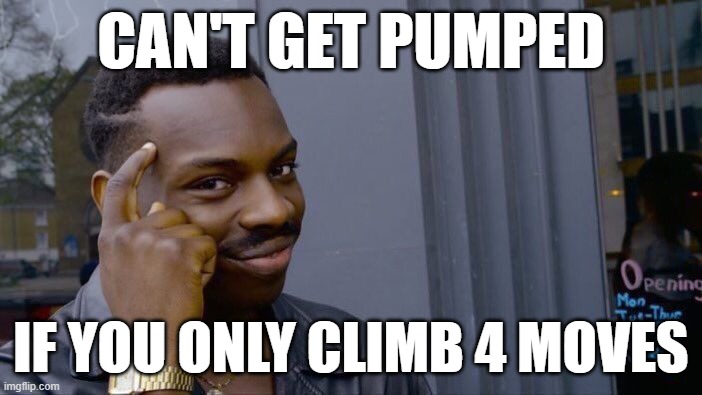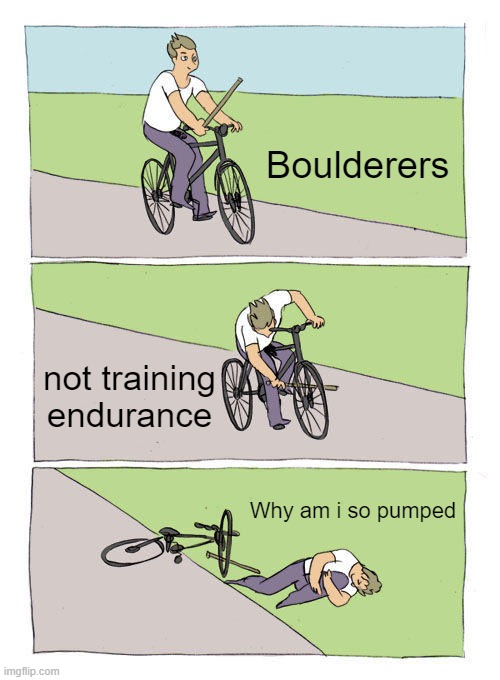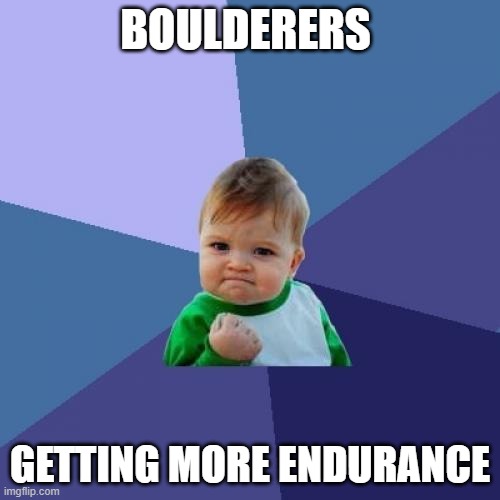Why Boulderers Should Rope Climb

In June, we brought you the article “Why Rope Climbers Should Boulder” (click here to read!). Today, we present why the opposite is also true!
Not to sound like a broken record, but variety is the spice of life. A common mistake in bouldering progression is over-prioritizing limit climbing. Limit climbing is important, but all too often we see boulderers fall into the same trap, getting sucked into single hard moves or hard sequences with a few moves. Sessions start to look the same week after week, month after month. We get stuck in a project mindset; we like to work hard and try hard. Whatever the motivation is, boulderers tend to enjoy projecting, whether it’s chasing a new grade or having something go from feeling impossible to possible.

While limit climbing is a great session, variety and volume are critical. By nature, limit sessions don’t have a lot of volume. We try hard and then rest (a lot, hopefully) to ensure our next attempt is of high quality. These sessions are great for tapping into and building limit strength and power. But there is so much more to climbing than grabbing and pulling as hard as possible. Limit sessions are also extremely fatiguing and require proper rest and recovery. This is vital to ensure we show up fresh and able to actually work at our limit. If we do too many limit sessions without enough rest, we won’t be capable of having a true limit session.

So why is rope climbing important for boulderers? Too often we get sucked down the rabbit hole of strength and power. Everything seems to be about how much weight we can load on our fingers and how much we can pull. We forget, even neglect, that climbing is a movement and skill sport. There is an endless number of possible moves that can be encountered on the wall. We want to become comfortable, confident, and prepared to meet anything. To become a better climber, we don’t want to just brute strength our way through climbs but use our technique and strength to do the moves in the easiest, most efficient way possible. We want to get as much exposure to as much varied terrain and movement as we can! While a limit climbing session might last an hour or two with less than 30 minutes of actual climbing, a volume rope session can last just as long with 2-3 times as much climbing. While it’s lower intensity, that’s a lot more time under tension.

Rope climbing can be used strategically in your climbing schedule, allowing you to “rest” while still climbing and practicing the skills component. Think of it as an active rest day. You get to climb and do moves while letting your limit strength and power recover so your next limit session isn’t impeded by fatigue.

Rope climbing also lets us tap into different energy systems. Doing a 60-foot rope climb with 24+ moves is going to feel vastly different than a 4-8 move boulder problem. More endurance has never hurt any boulderer. This increase in volume is great for increasing capacity, allowing you to recover faster. This means more attempts on your projects during your boulder sessions. Not all boulders are short. New commercial bouldering walls are getting bigger and bigger; impressive roofs and overhangs are getting longer and longer. It’s not uncommon to have boulders with 20+ moves. Likely, more power and strength aren’t the only factors that will get you up these climbs. Increasing your baseline endurance is a great way to ensure you have power and strength to execute while deep into these long boulders. And as a boulderer, it’s more likely the lower-hanging fruit will be your endurance. Would it be easier to add 10% more strength and power or increase your fitness/endurance by 10%?

Rope climbing is fun! That’s why we climb, right? Rope climbing is a great way to switch things up and present a new challenge. We might be super confident 10 feet above a pad, but how are we 6 feet above our last clip while 60 feet off the ground? Rope climbing also promotes efficient climbing techniques; it’s a lot harder to brute strength our way through 60 feet of technical climbing than it is to brute strength our way up a 4-8 move boulder. Becoming more efficient and using proper positioning is a great way to enhance existing strength.

I think what we are trying to say is, while limit climbing and bouldering hard is great, don’t forget to add some volume to your sessions. When we first start our climbing journey, volume and mileage are huge for our progression. Whether you do it on a rope or a boulder wall, don’t forget to include higher volume days. Have days where you actually send, ignore the grades, and try to flash or do as many in a session (hard climbs you have to work for but can send in a session or two) projects as possible.

Climbing is dangerous, it involves inherent and other risks and cannot be eliminated. The information presented here does not describe all of the risks associated with climbing and is not intended to replace or supersede expert instruction and training.
© 2024 Vertical Endeavors, Inc. All rights reserved. The contents of this article, photographs, and graphical representations are protected by U.S. and International copyright laws. Reproduction and distribution, in part or whole, without written permission from Vertical Endeavors are prohibited. The opinions and information contained in this article are for entertainment and informative purposes. They are those of the author and may not represent those of Vertical Endeavors, and do not necessarily reflect the ideas, ideologies, opinions, or points of view of the organization, affiliates, owners, stockholders, partners, suppliers, licensors, or staff. Under no circumstances shall Vertical Endeavors or any entity that is, has been, or will be affiliated be liable for any indirect, incidental, consequential, special, or exemplary damages arising out of or in connection with the information contained in this article.

